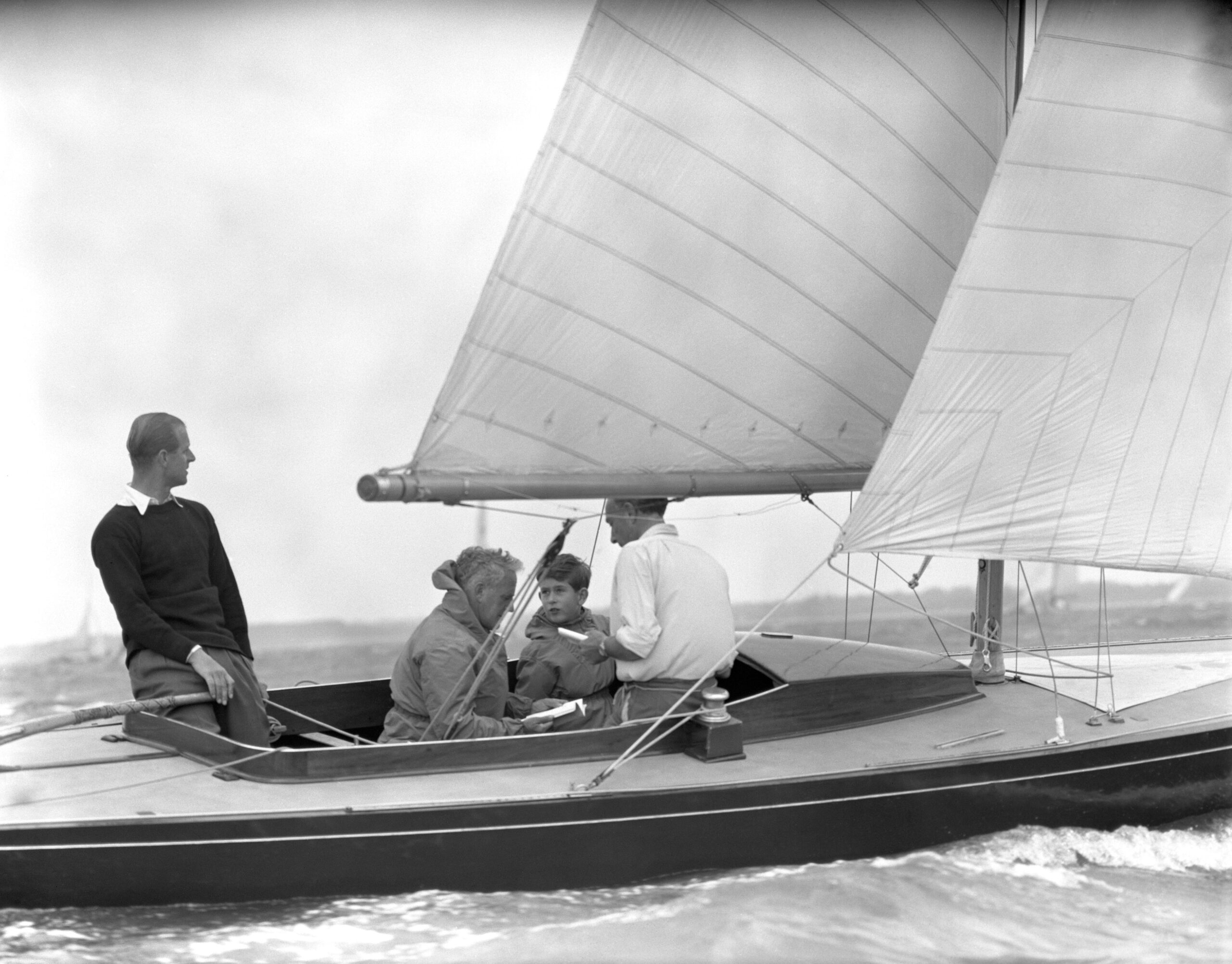Prince Philip, the Duke of Edinburgh, has died at Windsor Castle, at the age of 99. One of the more controversial members of the British royal family (one might respectfully describe him as having been a “character”), he was also a keen sportsman and had a lifelong love of sailing and the sea.

Philip was born on June 10, 1921, in Corfu, as a prince of both Greece and Denmark. Perhaps that heritage, from two great seafaring nations, nurtured his passion for the sea. Following the exile of the Greek royal family, he arrived in the UK by a circuitous route and was educated at Gordonstoun school in Scotland, where learned to sail.
Philip joined the Royal Navy at the age of 18, as the storm clouds gathered over Europe in 1939. A year later he graduated top of his class in Dartmouth, and underwent further training in Portsmouth. His service during the Second World War was distinguished, including periods on board HMS Ramillies, HMS Shropshire, HMS Kent, HMS Valiant, HMS Wallace and HMS Whelp in the Indian Ocean, the Mediterranean, in the battle of Crete, the Allied invasion of Sicily, with the British Pacific fleet, and in Tokyo Bay.
For his service in the war he was awarded the 1939-1945 star, the Africa Star, the Atlantic Star, the Burma Star with Pacific clasp, the Italy Star, and the 1939-1945 War Medal. In addition to the many other honours bestowed upon him since the war, he was awarded the Naval Long Service and Good Conduct Medal with six bars, in 2016.

By 1952, Philip had ascended to the rank of Commander in the Royal Navy, on HMS Magpie. The death of his father-in-law George VI brought an end to his official naval career (though he was appointed Admiral of the Fleet) and meant he had many new duties as royal consort to the young Queen Elizabeth II.
That, however, didn’t prevent him continuing to sail.
He was a regular at the Cowes regatta on the Isle of Wight, racing there. In his earliest races, he took part in the Dragon-class yacht Bluebottle, a gift from the Island Sailing Club on the occasion of his wedding to Elizabeth. It was in Cowes that he formed a close sailing partnership with Uffa Fox, often sailing with him on the boat Coweslip, and the pair won the Britannia Cup in 1952.
Despite “retiring” in 1997, at the age of 76, Philip never lost touch with Cowes. In 2015, as Admiral of the Royal Yacht Squadron, he led a royal review of almost 200 vessels at that year’s event.
As well as holding the post of Admiral of the RYS, Philip was granted numerous other posts in sailing. He was, among other things, Admiral and patron of the Royal Southern Yacht Club in Hamble (where the Prince Philip Yacht Haven bears his name), patron of the Royal Sydney Yacht Squadron, and patron of the Amateur Yacht Research Society, to name just a few.

From 1954 until his death, he was Admiral of the Fleet of the Royal Australian Navy. A year earlier, he had already been made Admiral of the Royal Canadian Sea Cadets (he became Admiral of the Royal Canadian Navy in 2011). From 1958 until his death, he was also Admiral of the Fleet of the Royal New Zealand Navy, and in the UK he was Admiral of the Sea Cadet Corps (1952-1992) and Captain of the Royal Marines (1953-2017).
When he turned 90, the Queen appointed him Lord High Admiral of the Royal Navy, which is the highest rank in the RN that anyone other than the sovereign can hold.
Naturally, Prince Philip had close associations with sailing and seafaring organisations in the UK. For example, he became the President of King George’s Fund for Sailors (now The Seafarers’ Charity) in 1977, and continued to support them until 2011. For many years he was also a key figure in the RYA. He was elected President in 1956, formally overseeing the establishment of the RYA Training Committee. He stepped down in 1970, only to return in 1975 for a second term. He stayed until 1980, when he oversaw his last meeting as President at the Little Ship Club.
Sarah Treseder, RYA chief executive, said of the Duke of Edinburgh: “As a sailing community we share the nation’s sadness following the loss of Prince Phillip. He will be missed by the RYA family and we pay tribute to not just a keen, competitive and successful yachtsman, but also an outstanding President of our association who dedicated many years to helping protect and promote our sport”.
Prince Philip: Born 10 June, 1921, Corfu. Died 9 April 2021, Windsor.
